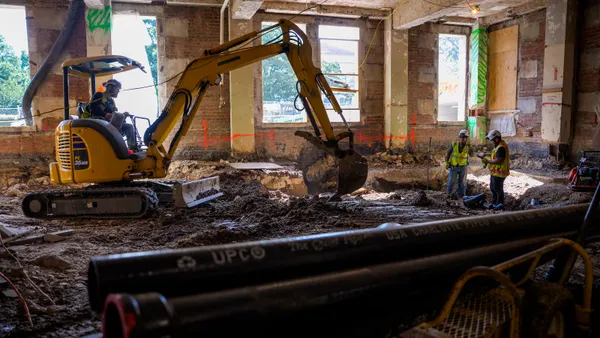When it comes to how companies should account for shrinking or rationalizing their real estate footprints in their financials, it’s complicated.
It’s not a simple matter of CFOs making a quick call to move out and move on. Instead, companies that are looking to realize savings by cutting back on excess office or other space are grappling with many questions as they seek to properly account for abandoned property or modified leases according to generally accepted accounting principles (GAAP), two experts said in a recent Accounting Today web seminar.
The pandemic and the rise of remote work has accelerated already ongoing efforts by many companies to take a hard look at how much brick and mortar real estate their businesses need, Tim Kolber, managing director at Deloitte, said during the seminar, “Insights on lease abandonment & impairment in a post-pandemic world.”
In the last two years, Kolber said he’s been working with many companies involved in rationalization initiatives. “The end game is to analyze the overall organization-wide real estate footprint and rightsize the real estate footprint where it makes sense.”
Accountants aren’t the only ones adjusting to the implications of the ongoing shifts in where people work. U.S. real estate developers are pausing major office projects under way or in the planning stages, according to a Nov. 8 Wall Street Journal report. Meanwhile in Chicago, Mayor Lori Lightfoot has a plan to revive a downtown Loop area as a mixed-use neighbohoord by converting office buildings into apartments, according to a Nov. 3 Crain’s Chicago Business report.
Businesses are looking to better fit their real estate footprint to their changing needs in a range of ways. Certain companies are exiting their leases before the end of their contracts, others are purchasing or leasing more space for social-distancing purposes, he said. Some are modifying existing lease agreements and either eliminating or scaling back the space and still others are executing sale-leaseback deals, he said.
“If you’re entering into any of these types of transactions it will really be important to understand the accounting implications and make sure you’re doing the right thing and getting the right people involved early in the transaction,” Kolber said.
Communication between a company’s real estate and accounting departments is key because even the vocabulary that each group uses can be different in a material way, Matt Waters, director of lease accounting at CoStar Group, a real estate data and analytics firm, said on the webinar.
“Sometimes the word abandonment could be used…and that doesn’t necessarily mean it’s an abandonment for accounting purposes,” Waters said. “It could be the real estate team is saying ‘we’re abandoning this’ but on the accounting side, the accounting team has to treat that as potentially an impairment.”
For accounting purposes, companies need to consider several issues before they can decide how to treat empty, but still-leased real estate in their reports.
For example, determining whether a lease asset is impaired involves examining the undiscounted cash flows and comparing them to the asset’s carrying amount and fair value.
Meanwhile, even empty leased real estate must meet certain tests to be considered abandoned, Kolber said. For example, if the lessee or tenant is getting any economic benefit from the space, such as housing servers in it or using it in some other way for storage, it cannot be treated as abandoned for accounting purposes, he said. In addition, to be treated as abandoned in accounting a second test that has to be met is that there is no ability to sublease it to another party or tenant, Kolber said.
“This evaluation depends on several factors: remaining lease terms, the nature of the property and level of demand in the market,” Kolber said, noting that the process requires a judgment to be made and may not be straighforward. “Concluding an asset is abandoned is really meant to be a high hurdle.”














